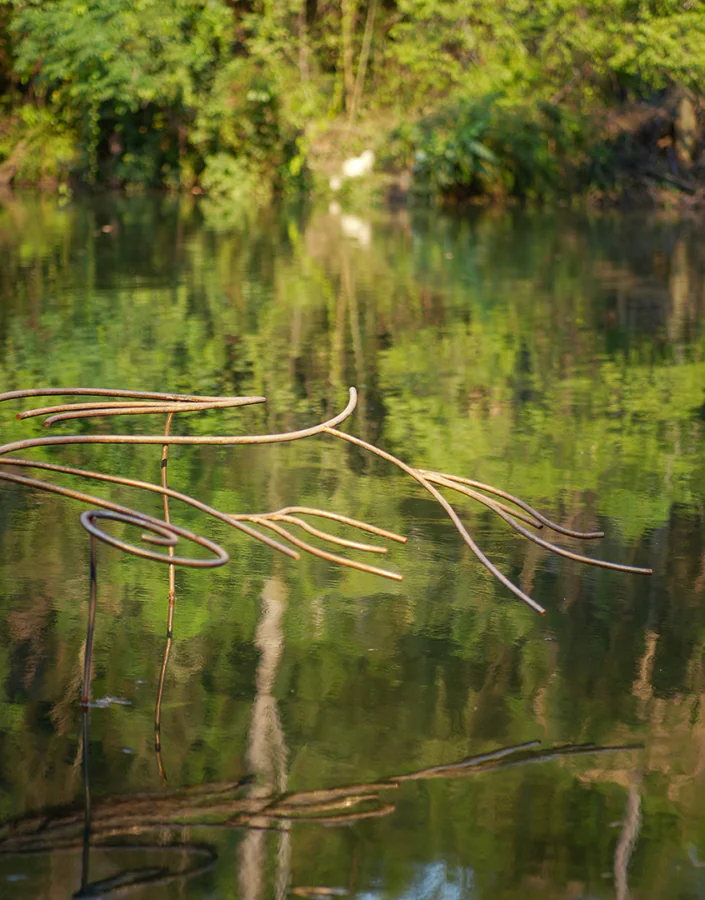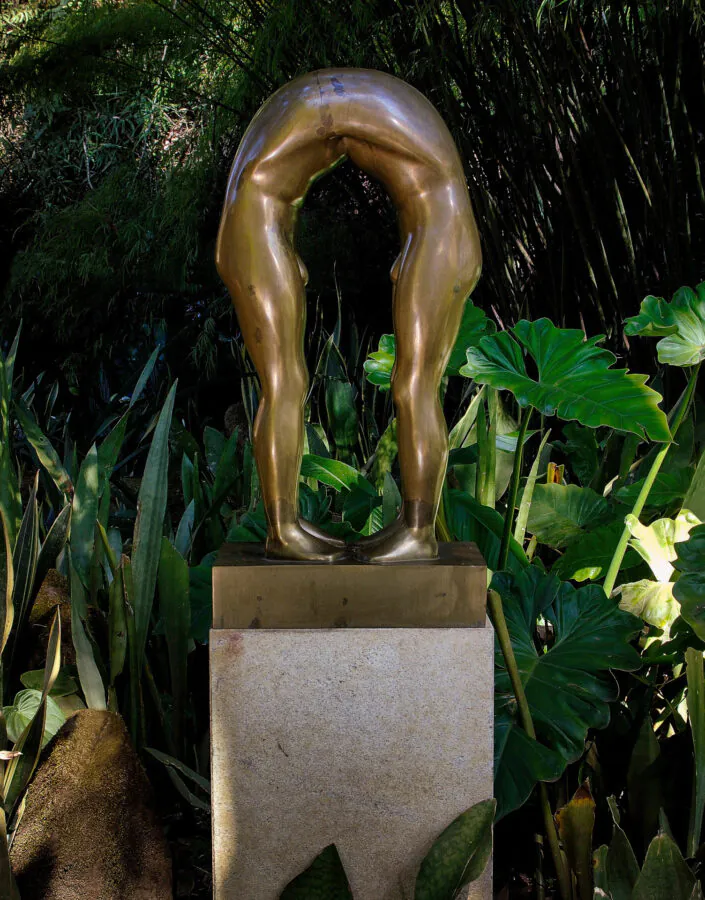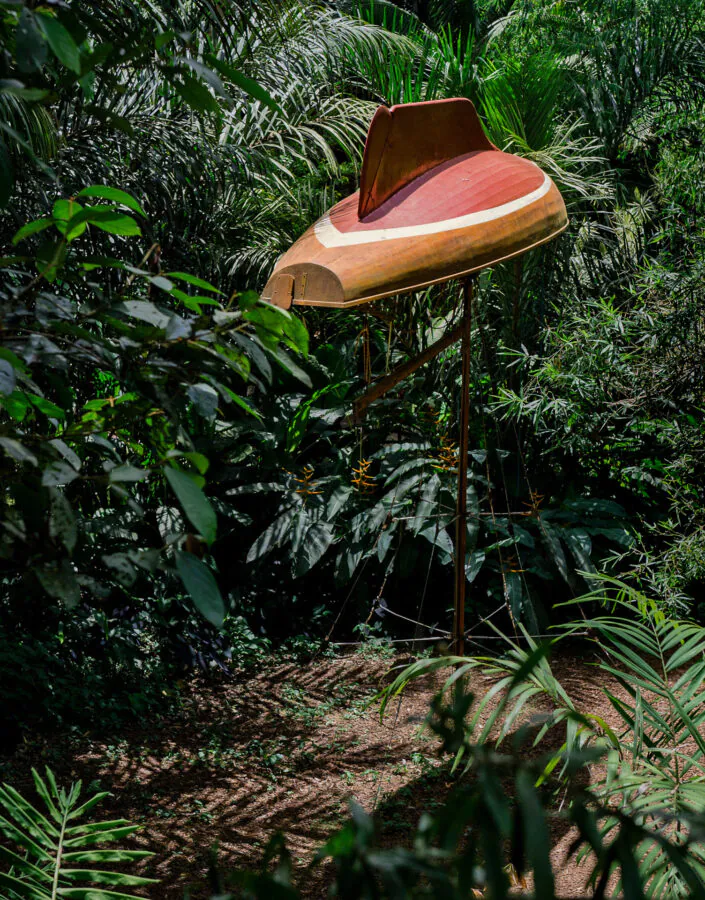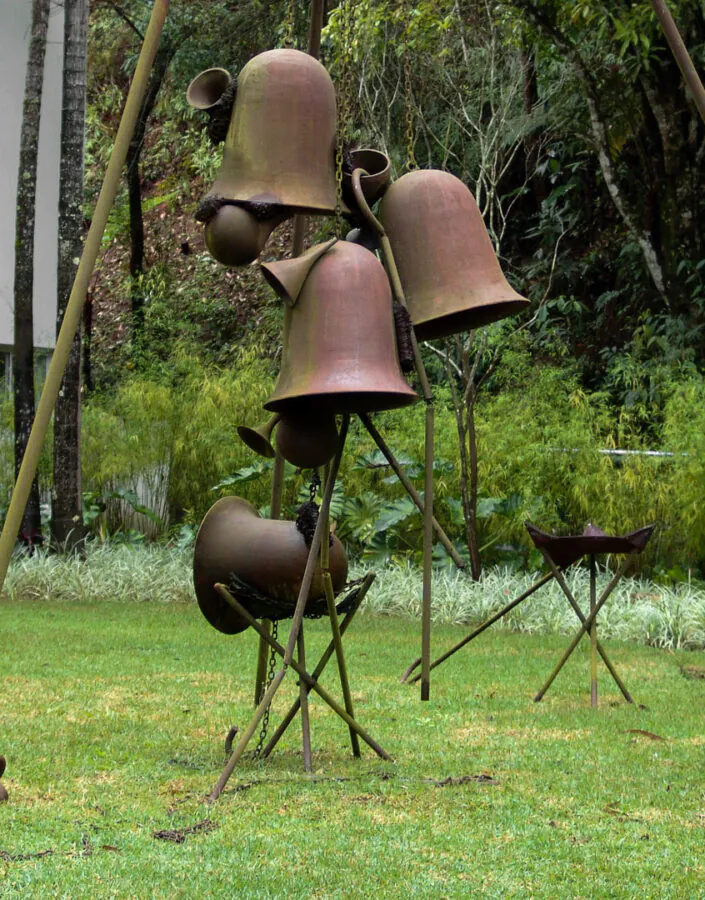Abre a porta (2006); Rodoviária de Brumadinho (2005)
2005 – 2006
Tinta automotiva sobre fibra de vidro


The works of John Ahearn and Rigoberto Torres portray the usages and traditions of communities close to Instituto Inhotim. Both Abre a porta (2006) and Rodoviária de Brumadinho (2005) are the result of a long immersive process of the duo in the daily life of Brumadinho.
In the first mural, one can see the representation of a religious cortege of African origin, composed by local groups of Congado and Mozambique. The second one presents the city’s bus station that, more than a transportation terminal, is also a space of social interaction: local artists perform and people dance to the sound of forró, a traditional Brazilian music genre.




![Olafur Eliasson, By means of a Sudden Intuitive Realization, 1996,[detalhe], iglu de fibra de vidro, água, iluminação estroboscópica, bomba d’água e plástico, 300x510. Foto: William Gomes](https://www.inhotim.org.br/wp-content/uploads/2021/05/inhotim_acervo_by_means_of_-sudden_intuitive_realization_olafur-705x900.jpg.webp)

![Jarbas Lopes, Troca-troca, 2002, [detalhe], 3 fuscas com aparelhagem de som, dimensões variáveis. Foto: William Gomes.](https://www.inhotim.org.br/wp-content/uploads/2021/04/inhotim_acervos_troca_troca_jarbas_lopes-1-1-705x900.jpg.webp)
![Amilcar de Castro, Sem título, 2001, [detalhe], aço corten, 448 x 500 x122 cm. Foto: William Gomes](https://www.inhotim.org.br/wp-content/uploads/2021/04/inhotim_acervos_artista_amilcar_de_castro_-2-2-705x900.jpg.webp)
![Paul McCarthy, Pinocchio Block Head, 2001, [detalhe], bronze, 320x167x230 cm. Foto: William Gomes](https://www.inhotim.org.br/wp-content/uploads/2021/04/inhotim_acervos_pinocchio_boxhead_paul_mccarthy-2-705x900.jpg.webp)

